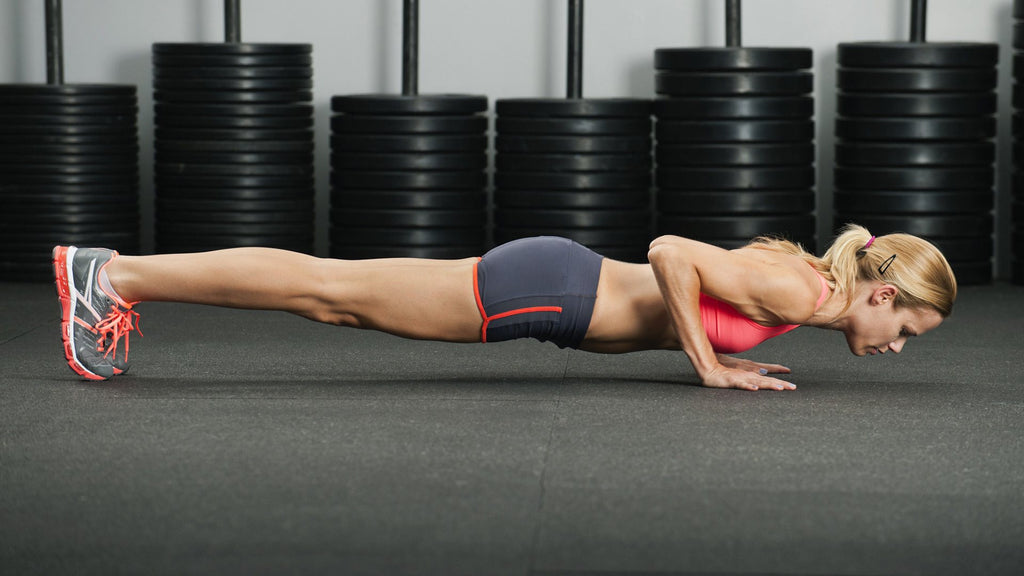You have no items in your shopping cart.

The 7 Best Yet Simple Pre-Workout Moves Before Hitting The Gym
Posted by SupHub Inc. on
You either make or break your exercise routine before it begins. Before piling on the plates and grabbing the barbell, you need to warm up the body to perform your best every time. But, is your pre-workout session helping you reach your full potential? Better yet, is it ‘bullet-proofing’ your body to resist injuries and aches?
According to Tony Gentilcore, CSCS, co-founder of Cressey Performance in Hudson, Massachusetts, the biggest mistake anyone can make is ‘glossing over the warm up’. Subtle ‘stretches’ do nothing to increase body temperature, warm up joints, or get the nerves ready to go.
Instead, a great warm-up is more likely to help you perform better at the gym. “It’s not uncommon to see immediate improvements in the deadlift or squat. There’s a strong performance incentive to do a good warm-up, not to mention stacking the odds in your favour that you won’t get injured,” adds Gentilcore.
Take out a few minutes before every workout to prepare yourself, build more strength, and prevent muscle injuries.
Many coaches more than often take their warm-ups as training preparation – when it comes to a variety of sports – using techniques such as foam rolling and movement practice to get the gears aligned.
The ‘dynamic warm up’ approach involves all joints moving one at a time, then all together in progressive movements that loosen the body and stretch your muscles. Some of the classic dynamic moves include high knees, toe touches, and walking lunges.
Individuals perform optimally better and avoid injury after a warm-up that does what its name promises: warms you up. For cardio or ‘endurance’ routines, research shows that an active range of motion movements – also known as dynamic stretching – tend to be similar to what you will do in your workout and hence, improve performance. Some health experts even suggest performing short intervals of your planned exercise at a lowered intensity. For instance, brisk walking before running or push-ups before adding weight.
Getting started
Every pre-workout session is different, and depends on the goal of your workout and fitness levels. However, as a start off point, begin with these seven basic moves for everyday-gym warm up.
- Loosen up
With mobility movements such as foam rolling, you can easily warm your joints, muscles, and prep your body for exercise. Start by carefully rolling your back, then hit every section of the glutes, hip flexors, and legs.
The ‘poor man’s massage’ – Foam rolling

According to Gentilcore, foam rolling is done first and then the dynamic ‘move’ warm up. He suggests to think of it like the poor man’s massage. It removes the knots, trigger points, and scar tissues that accumulate in the body.
Overtime, the body restores its natural length and reduces nagging aches and pains. When you hit a trigger point, sit on that spot and let it dissipate. Shoot for eight to ten rolls per body part.
- The old-but-gold inchworm
Starting with one of the best warm-up activities ever, the great old inchworm, is basically an indistinguishable practice from the Vinyasa spill out of yoga. You are supposed to lower yourself into a downward dog position and walk your feet in slowly towards your hands, and then move your hands forward.
Doing this at least 10 times is going to really open up the stringent parts of your body, especially the area along your back. If you’re tight for space, just carry the move back and forth. However you do it, it will be highly beneficial for your body.
- Dynamic warm up
Instead of climbing onto the speeding treadmill, carry out a series of dynamic warm up exercises. Dynamic ‘core’ movements increase your body temperature, wakes up muscles and widens your range of motion. If the main workout focuses on a particular area, make sure your pre-workout session includes that area as well.
- Dynamic stretch push-up position
The first part of the dynamic stretch starts off in the push-up position. The shoulders should be laid out away from your ears, back and hips flat, abs and core engaged. Your hands should be placed underneath the shoulders, slightly wider than shoulder width apart.
- The downward dog
Another dynamic step is to push your hips backward and forward, moving up towards the sky like a downward dog yoga pose. You will feel a great stretch in your calves, hamstrings, while also engaging your shoulder muscles.
Compared to any joint in the body, your shoulders have the largest range of motion, so it is crucial to warm them up before exercising. After this step, you can go back to the push up position and repeat.
- The upper-back rotation
‘Starting on all fours’ is a good approach towards a productive pre-workout. After placing one hand behind your head, bring your elbow on that arm down, and rotate in towards the other elbow. Next, turn that elbow up towards the ceiling while turning your head. Make sure to keep the lower back and belly button in place, eyes following the elbow that is moving.
- The split dance
If you have ever experienced a ‘groin pull’, you know how annoying it is. Often, our hips tighten because of too much sitting, causing pain in the adjoining areas. The spilt stance mobility move is used to open the adductors – muscles on the inside of your thighs.
Get on all fours and stretch your right leg 90 degrees to the right side. While keeping the leg straight, push your hips back, and maintain the lower back arched throughout. You will eventually feel a tremendous stretch in your groin. Do this at least 10 times on each side.
The rocking-ankle

Begin by getting into a push up position (once more), lift one foot up and put it on the heel of the inverse foot. Walking while your butt is slightly raised, rock your heels downward to the ground and bring them back up. Walk your hands far enough back so that you can get your heels to touch the ground.
Practice and practice – body weight squats
Have a long, hard run ahead? Warm up with a few basic technique drills while moving through the exercises planned for the day at a lower, smoother intensity. Start with body weight squats or by holding an empty bar. Practicing the movement builds up muscle memory – also known as neuromuscular adaptation – and prepares your body for action.
Anything but fatigue
Your warm-up routine should never fatigue you. Since, there is a limitless variety to game-ready and often effective pre-workout moves, find an enjoyable exercise for yourself and remember to listen to the body’s cues. After all, it is one very important aspect of working out. And don’t forget to cool down in the end.
← Older Post Newer Post →





![6 Things You Should Do Before You Start Working Out [Muscle Building Tips]](http://suphub.com/cdn/shop/articles/muscle_build_small.jpg?v=1497249348)
